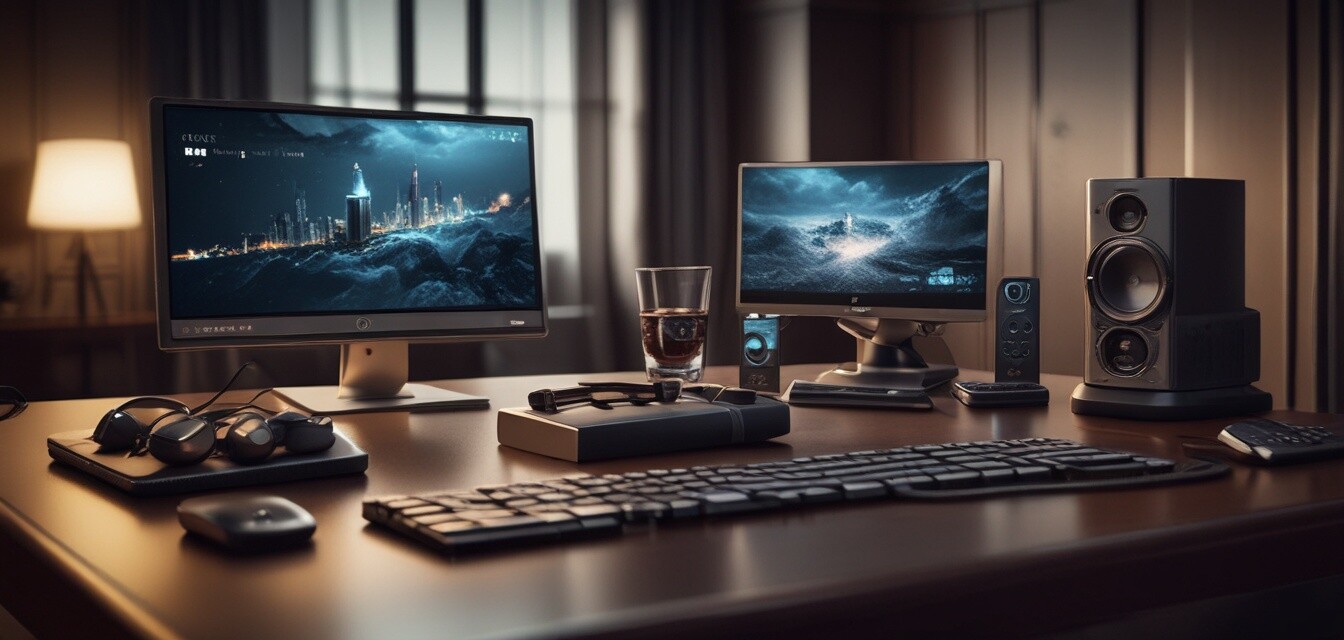
Innovations in Luxury Technology
Key Takeaways
- The tech advancements enhancing customer experiences in luxury markets.
- Examples of luxury brands leveraging cutting-edge technology.
- The role of smart technology in transforming traditional luxury goods.
- Future trends in luxury technology worth watching.
As we immerse ourselves into a world driven by rapid technological advancements, luxury products and experiences are evolving at an unprecedented pace. Today, we explore how the marriage of innovation and luxury is shaping the future of consumer goods, enhancing the way we experience and interact with high-end products. From groundbreaking electronics to bespoke experiences, the landscape of luxury has morphed dramatically driven by technology.
The Role of Technology in Luxury Products
Luxury brands are no strangers to digital transformation. The integration of innovative technology into product design and consumer interaction offers a unique edge over competitors. Brands are not only enhancing their offerings but also responding to changing consumer expectations with technology-driven solutions. Here’s how technology is making waves in the luxury sector:
| Field | Examples of Innovations | Impact on Luxury |
|---|---|---|
| Electronics | Smart TVs, premium sound systems | Enhanced user experience and premium design aesthetics |
| Fashion | Virtual fitting rooms, custom 3D printing | Personalized shopping experiences and sustainable production |
| Home Goods | Smart kitchens, automated security systems | Convenience and increased home value |
| Wellness | Smart skin care devices, luxury fitness trackers | Personalization and holistic health focus |
Luxury Brand Examples Leveraging Technology
Several luxury brands are spearheading this technological innovation. Their commitment to integrating cutting-edge technologies to enhance customer experience and product value illustrates the dynamic evolution of luxury. Some key players include:
- Luxury fashion brands adopting 3D body scanning technology for personalized fits and styles.
- High-end electronics brands investing in AI and machine learning to predict customer preferences.
- Luxury home goods that feature IoT technology for seamless smart home integration.
Shifting Consumer Expectations
Today’s consumers are more informed and connected than ever before, seeking products that promise both luxury and utility. This shift encourages brands to invest in technology to deliver value beyond traditional high-end features. As a result, we see luxury brands focusing on customization and experiencing over mere ownership. Key strategies include:
- Incorporating augmented reality (AR) experiences for product trials.
- Employing AI-driven personalization for customer engagement.
- Offering concierge services through advanced AI chatbots.
| Traditional Luxury | Technology-Enhanced Luxury |
|---|---|
| Focus on exclusivity and high price tags | Focus on personalized experiences and high functionality |
| Limited consumer engagement | Interactive and immersive brand experiences |
| Static marketing strategies | Dynamic marketing through data insights |
Future Trends in Luxury Technology
The intersection of luxury and technology is expected to grow, bringing forth fascinating trends that will further redefine luxury products. Some of these upcoming trends are:
- Increased adoption of sustainable tech materials in high-end fashion.
- Growth in luxury rental services leveraging tech for logistics.
- Virtual reality (VR) travel experiences offered by luxury hotels and resorts.
Tips for Spotting Emerging Luxury Innovations
- Follow industry news from reputable sources.
- Subscribe to updates from luxury brands and market analysts.
- Engage on social media platforms discussing luxury trends.
Pros
- Enhanced customer experience through personalization.
- Innovative features that attract tech-savvy consumers.
- Increased engagement and brand loyalty.
Cons
- Higher costs associated with integrating advanced technology.
- Potential loss of exclusivity if innovations become widespread.
- Challenges in maintaining luxury standards amidst tech integration.
Conclusion
As technology continues to evolve, it fundamentally changes the definitions and expectations surrounding luxury. Today, luxury is no longer just about opulence; it exemplifies a unique blend of quality, functionality, and innovation. By staying ahead of trends and leveraging technology, brands can not only meet but exceed changing consumer demands, continuing to thrive in this competitive market.
For more insights into luxury products and the latest trends, explore our blog on news and trends in luxury products for ongoing updates.

